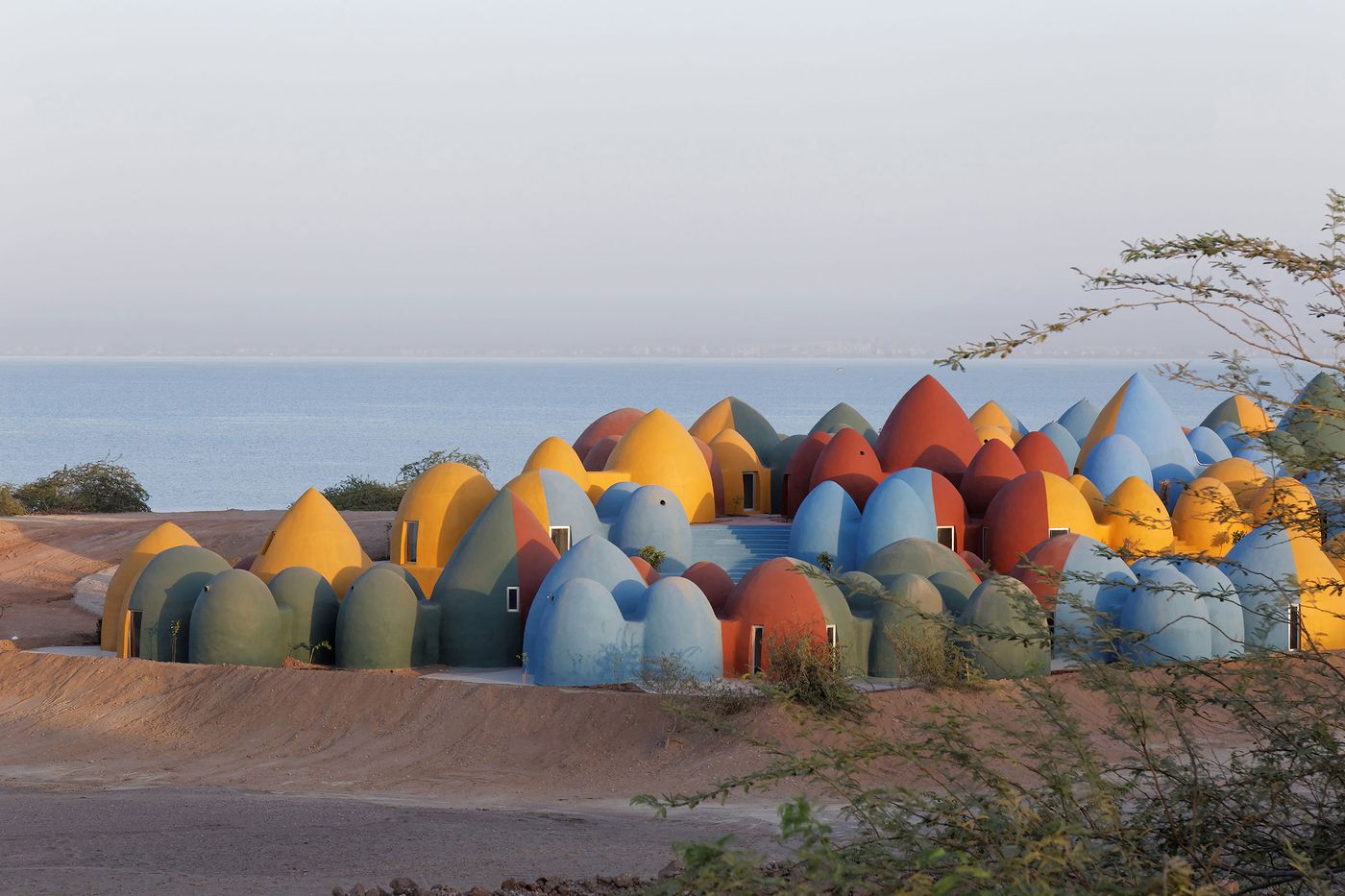
A Multipurpose Development on Hormuz Island Echoes the Kaleidoscopic Beauty of the Natural Landscape
Words by Eric David
Location
Hormuz Island, Iran
A Multipurpose Development on Hormuz Island Echoes the Kaleidoscopic Beauty of the Natural Landscape
Words by Eric David
Hormuz Island, Iran
Hormuz Island, Iran
Location
You’ve probably heard of the Strait of Hormuz in relation to its geostrategic significance - as the only sea passage from the Persian Gulf to the ocean, it controls the shipment of petroleum from the Middle East. What you may not know however, is that it is an area of extraordinary natural beauty, nowhere more so than Hormuz Island, with its surreal, otherworldly landscapes. Also known as Rainbow Island, it features a phantasmagoria of dramatic pink-red alluvium formations streaked with yellow-greens, oranges and purples, Mars-like neon-red beaches, salt-crusted jagged mountains, mangrove forests and rainbow-hued caves.
Despite its natural beauty and strategic importance, the local population of 6,500 inhabitants struggle to make ends meet which is why it’s so wonderful to see projects such as Majara Residence, a multipurpose touristic development by Tehran-based ZAV Architects. Mirroring the island’s kaleidoscopic landscape in the form of a colourful cluster of small-scale, rammed-earth domes, the project is part of the Presence in Hormuz series of urban developments aiming to empower the island’s local community. Cultural and social in its impact, Majara Residence ties together the lives of local people and tourists both culturally and economically.
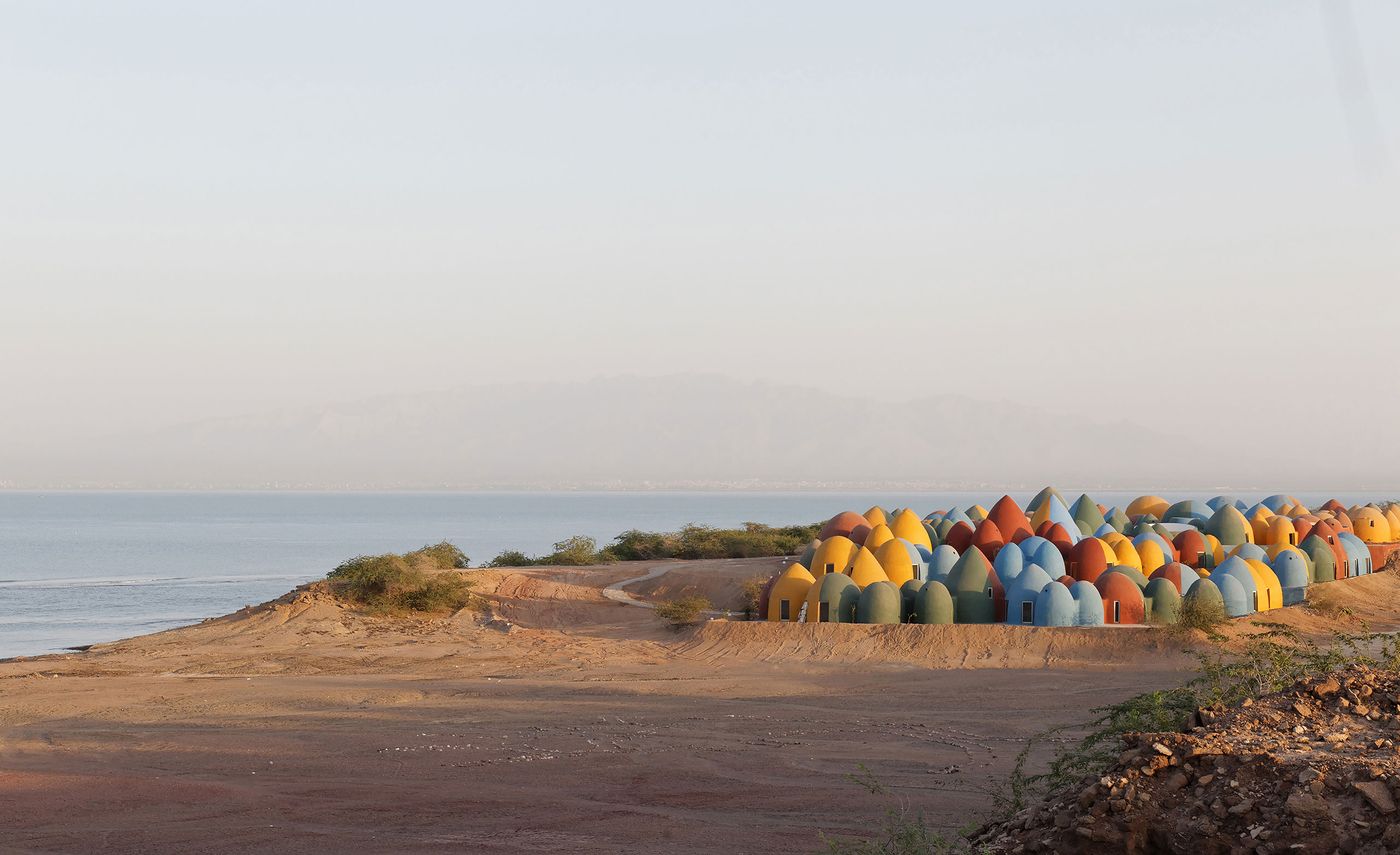
Photography by Soroush Majidi.
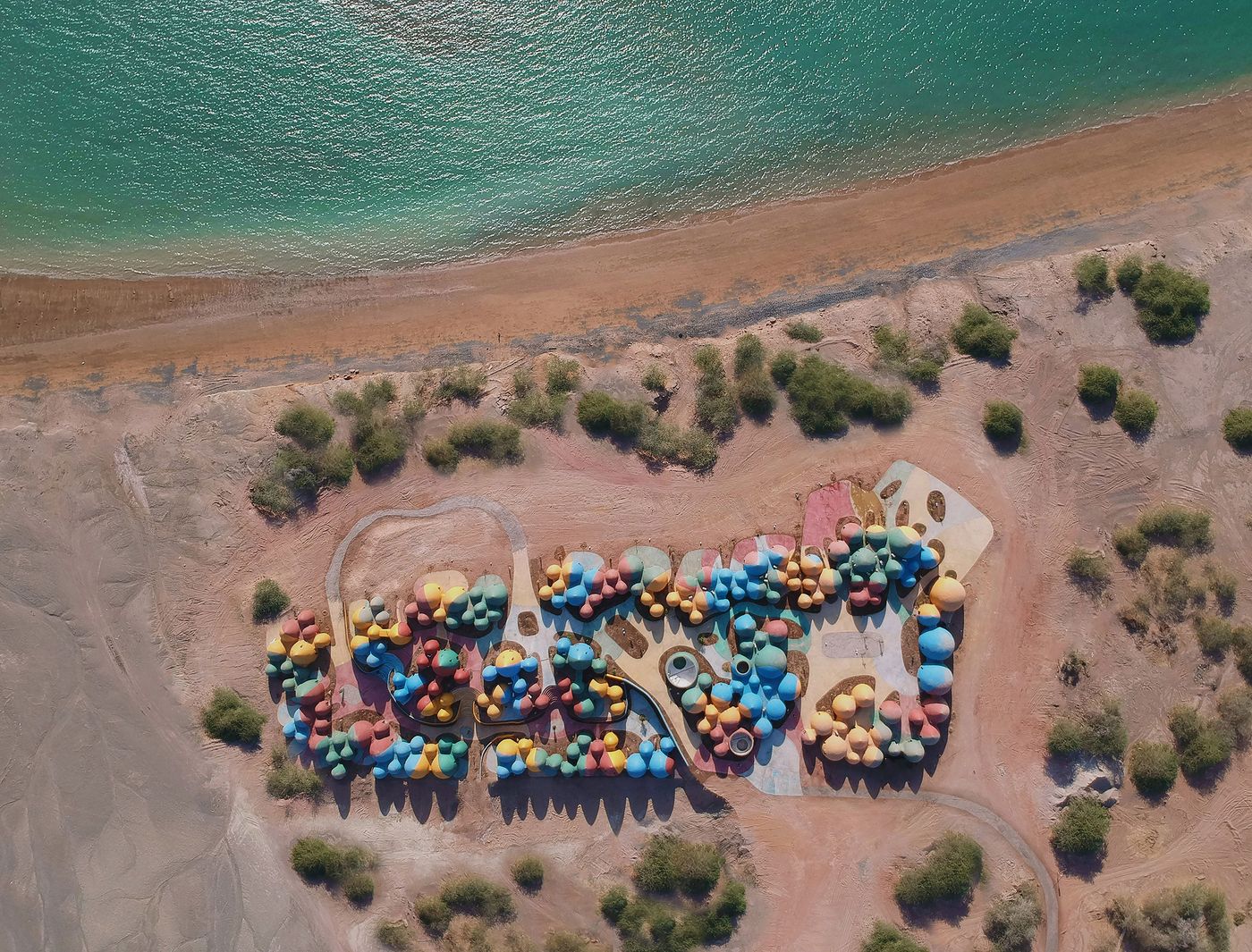
Photography by DJI.
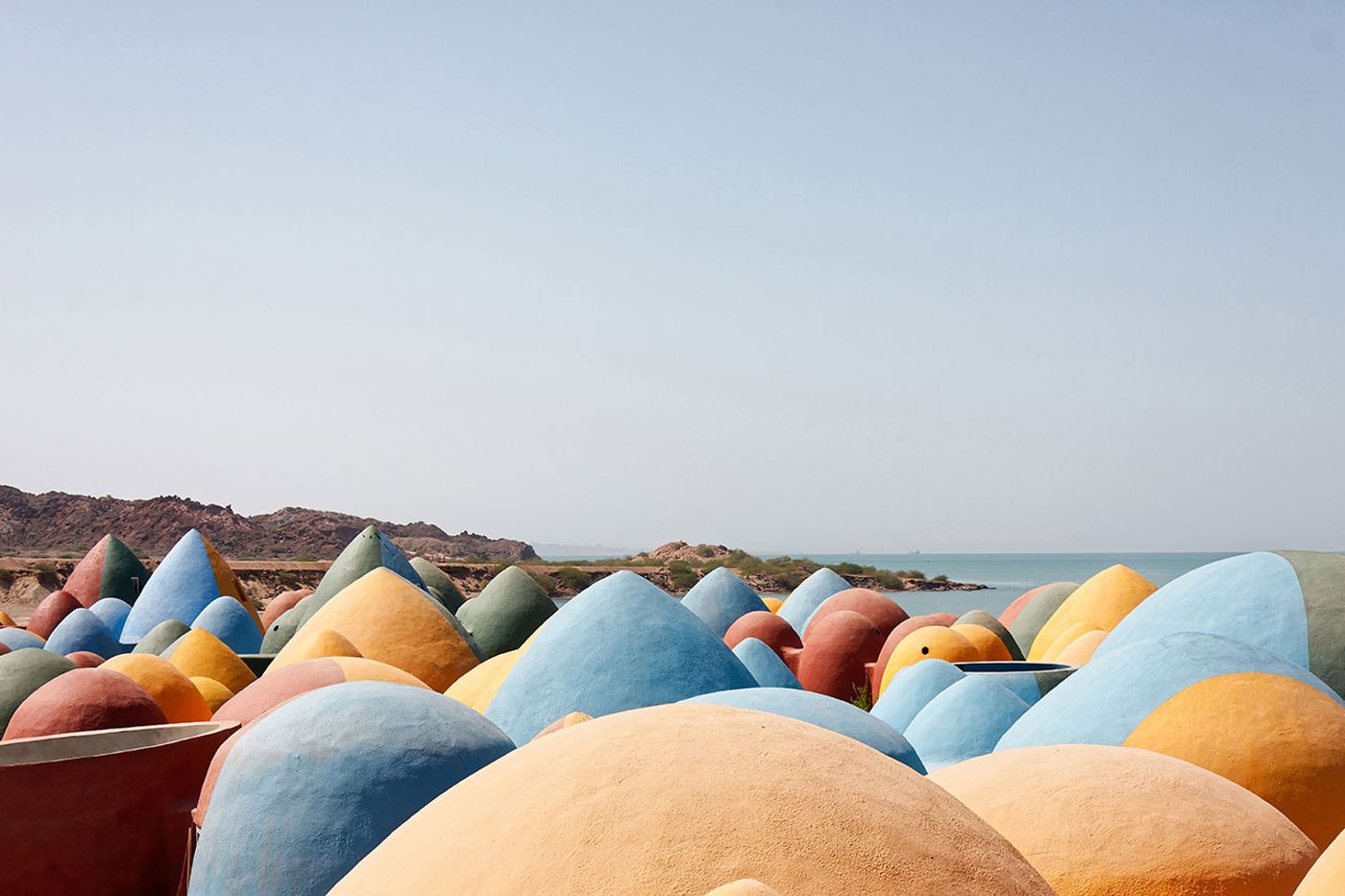
Photography by Payman Barkhordari.
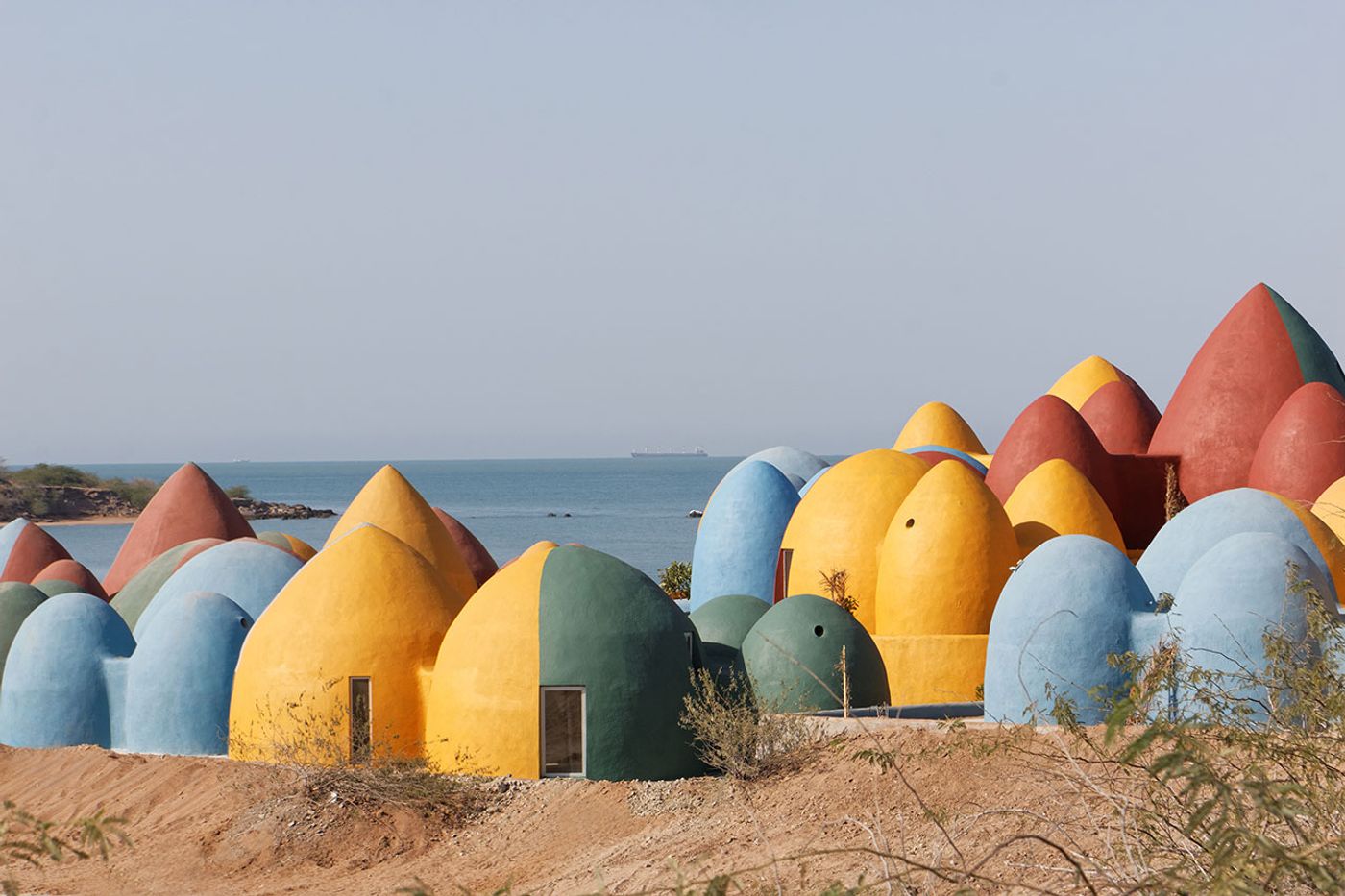
Photography by Soroush Majidi.
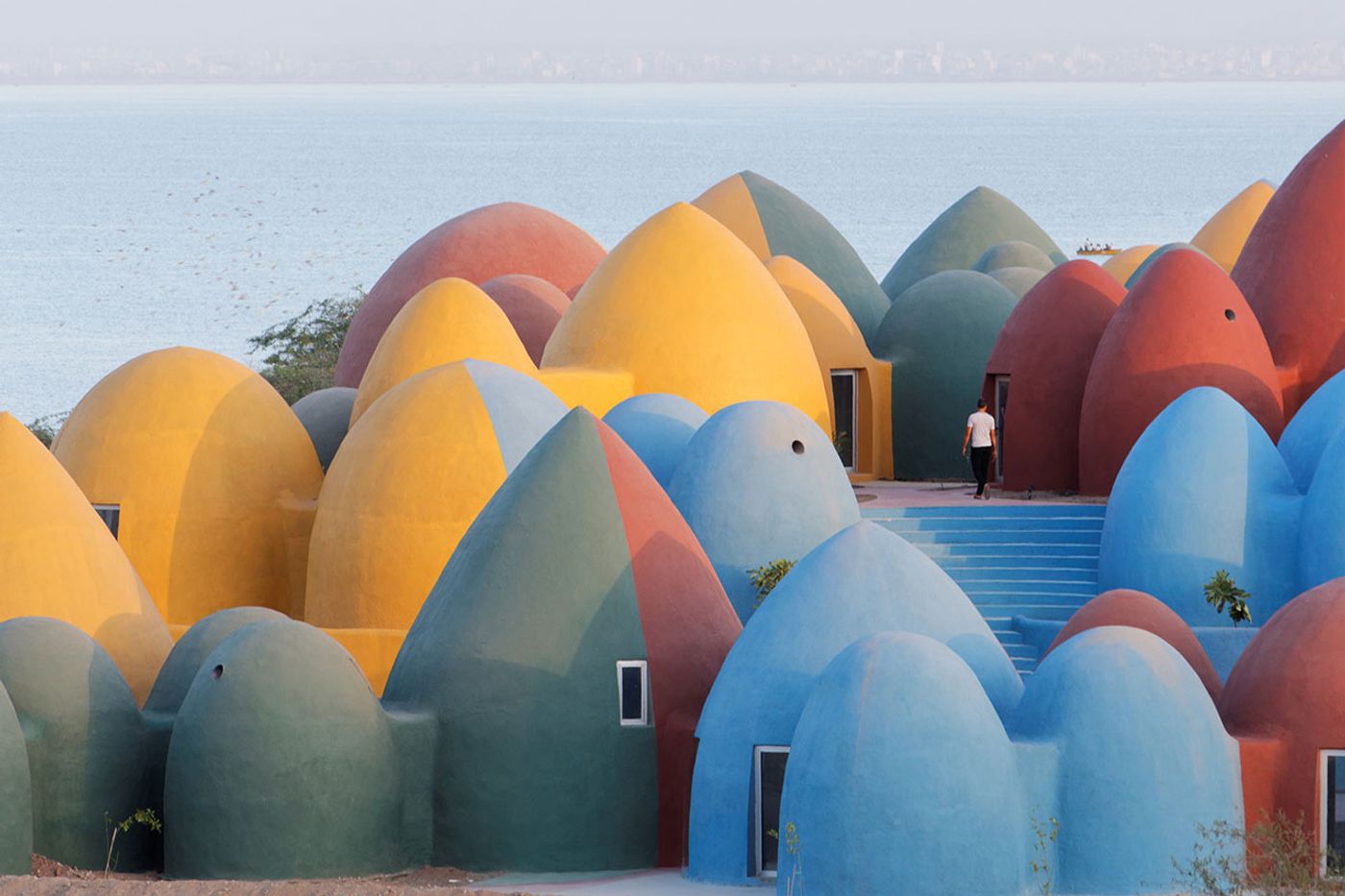
Photography by Soroush Majidi.
More than a touristic development, the project fits in with ZAV Architects’ exploration of the purpose of architecture. Does architecture have the capacity to elevate people’s wellbeing by staying relevant to its context and time? What are its limits and how can it suggest a political alternative for communal life? How can it attain social agency? “Presence in Hormuz” attempts to find answers to such fundamental questions by encouraging the participation of local inhabitants whilst taking into account their interests.
Located on a beachfront expanse outside the island’s only settlement, Majara Residence takes the form of smaller and larger pointed domes grouped in clusters of varying density providing accommodation for 84 guests together with a café, restaurant and wellness centre as well as handicraft workshops, a cultural boutique and an art residency program. Set against a backdrop of jagged rock formations, the undulating composition of domes creates, in the architects’ words a “colourful three-dimensional fabric”, its blood-red, yolk-yellow, sky blue and sea green hues echoing both the colouration and morphology of the island’s otherworldly vistas.
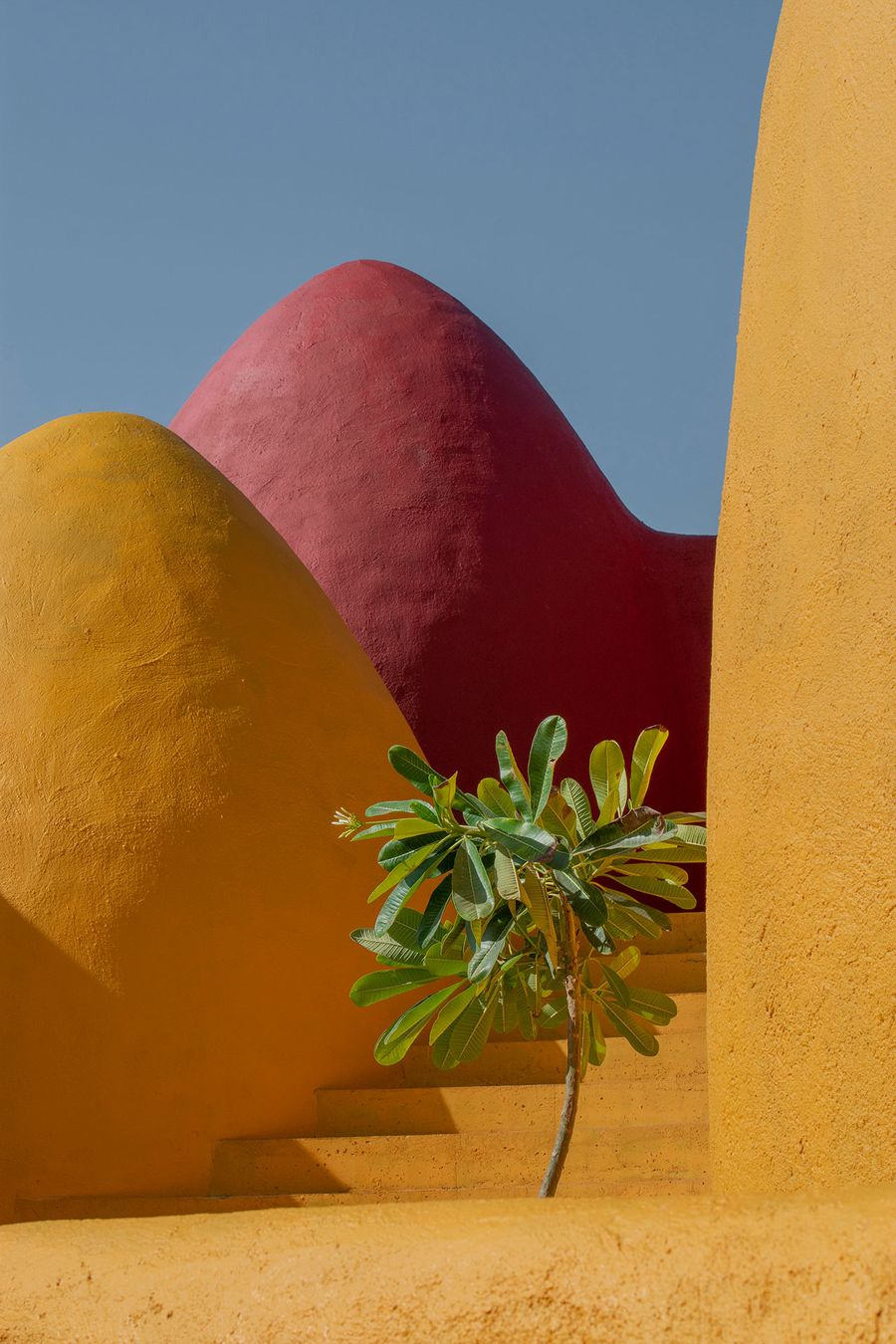
Photography by Tahmineh Monzavi.

Photography by Tahmineh Monzavi.

Photography by DJI.
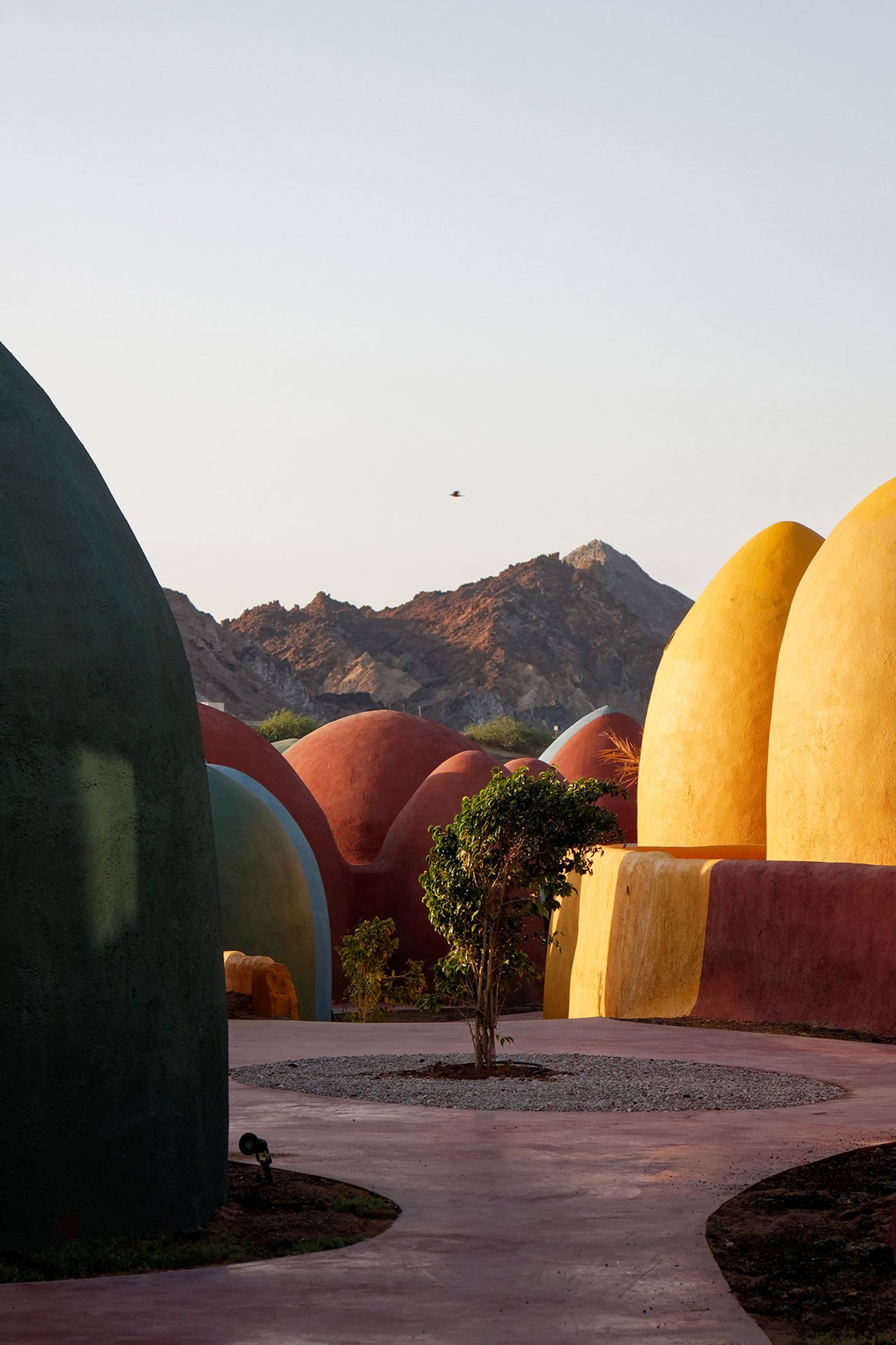
Photography by Payman Barkhordari.
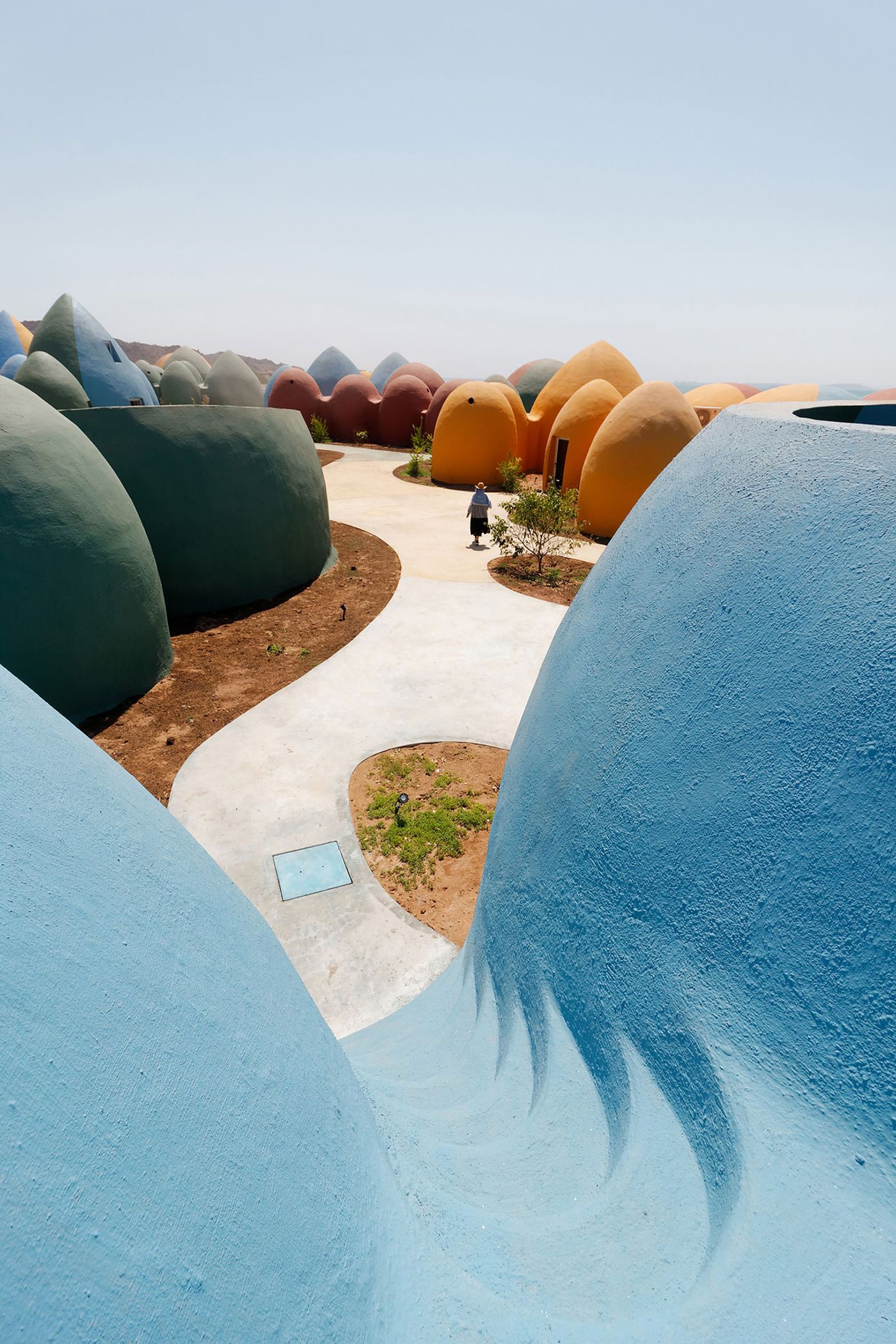
Photography by Payman Barkhordari.

Photography by Payman Barkhordari.
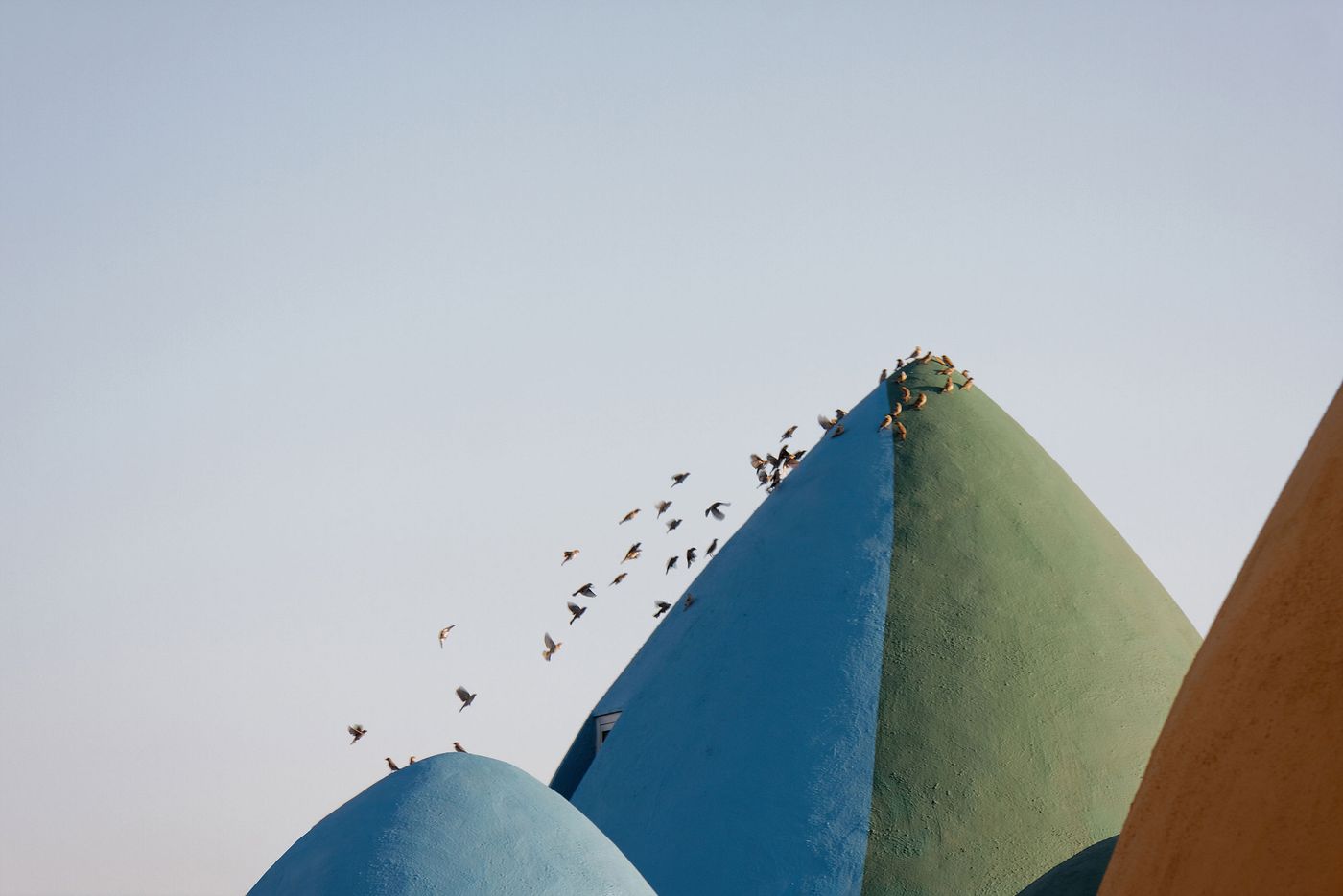
Photography by Payman Barkhordari.
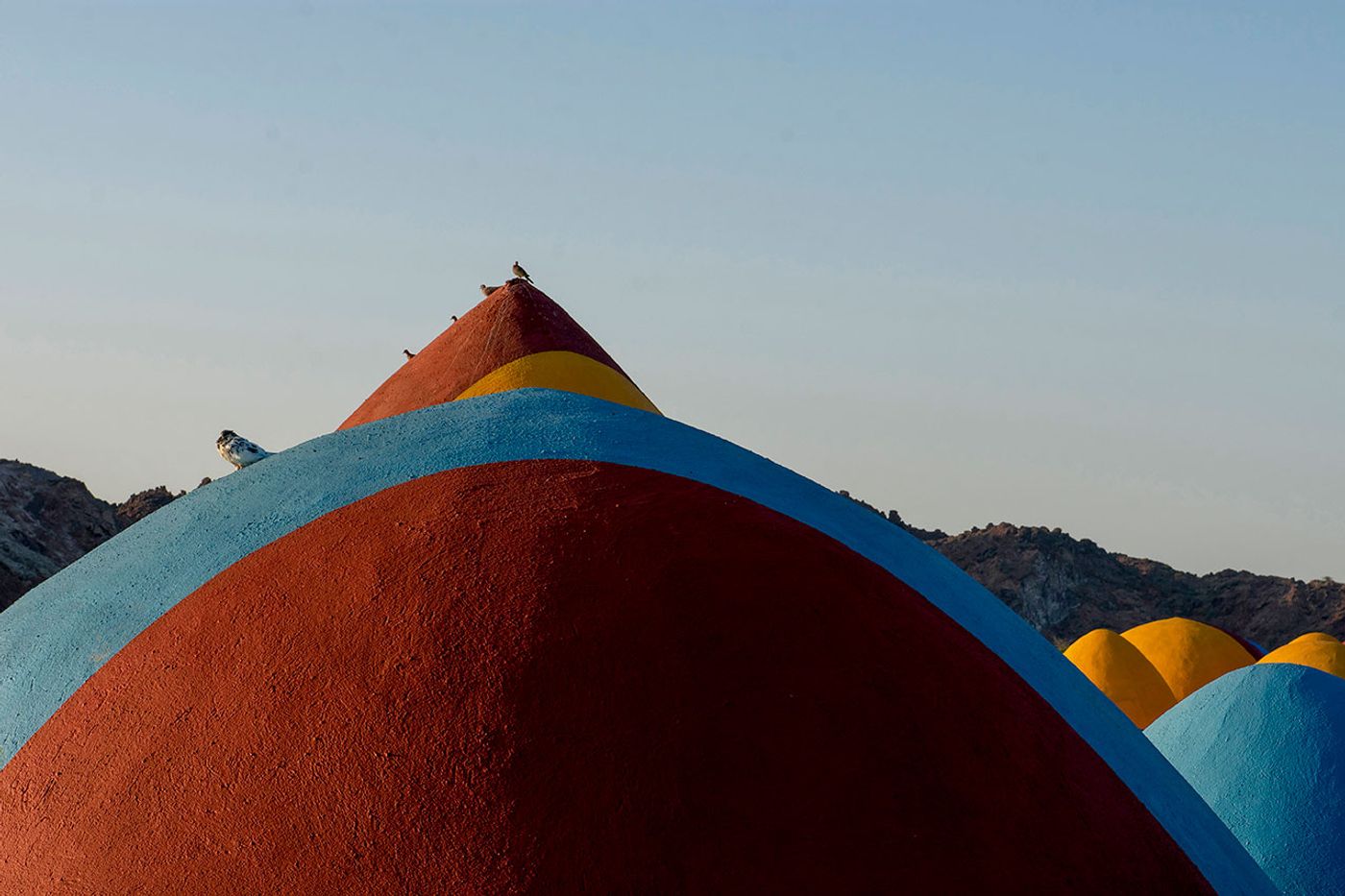
Photography by Tahmineh Monzavi.
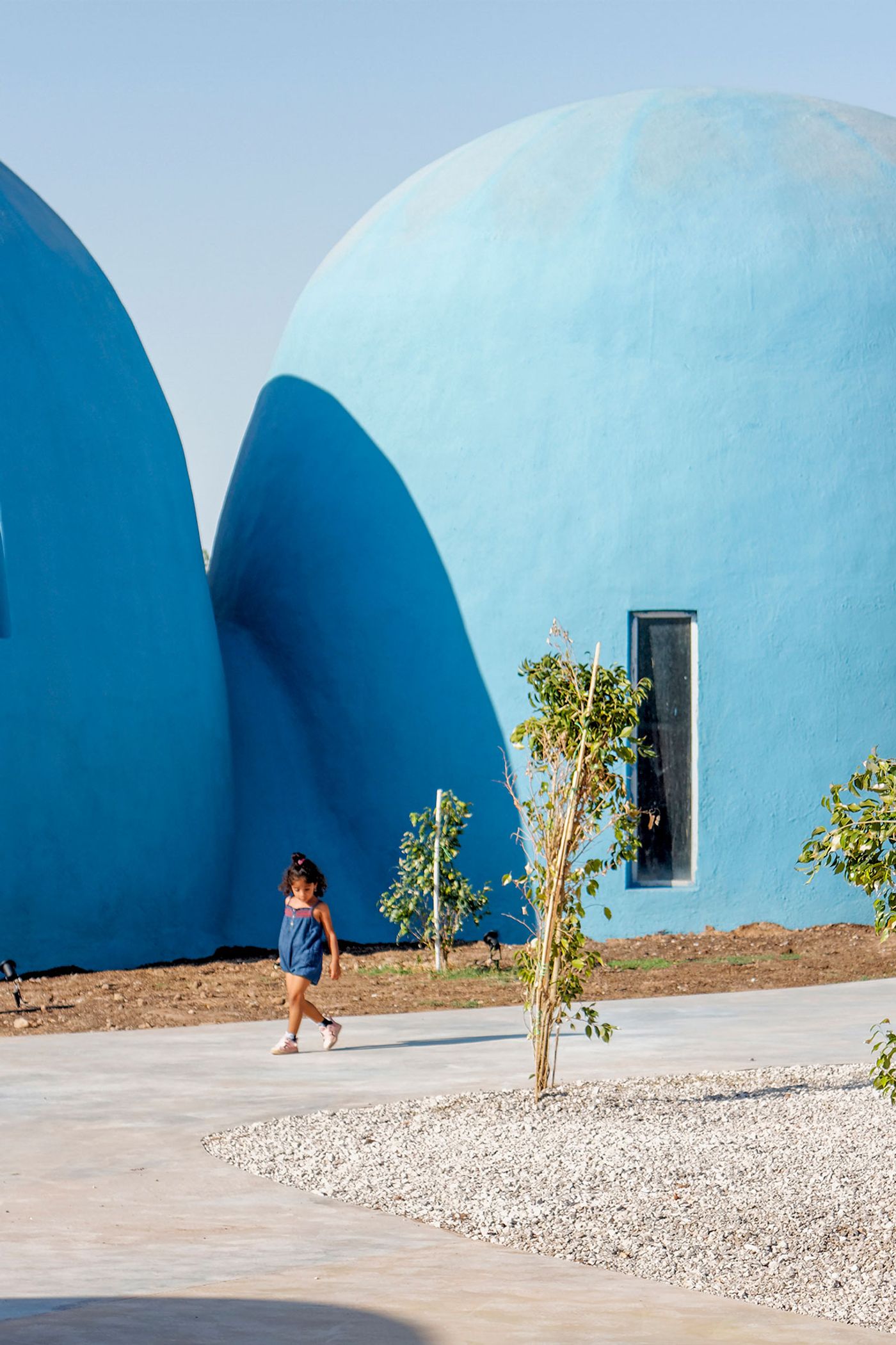
Photography by Payman Barkhordari.
Made by local people, the domes are based on acclaimed Iranian architect Nader Khalili’s “Superadobe” housing units. Part of Khalili’s life-long quest for an architecture that could house the world’s poor, the “Superadome” is a type of rammed earth construction using woven polyester bags filled with sand, soil, or clay – or whatever is at hand. The bags are laid in coils to construct load-bearing walls that spiral inwards to then create a domed roof at the top. The beauty of Khalili’s design lies both in the pre-modern architectural language, a type of timeless vernacular so to speak, and its practicality: it’s extremely low budget, doesn’t require skilled labour and ensures reduced heating and cooling costs due to thermal mass.
In view of the project’s mission to boost the local economy and promote social progress, and in light of the country’s lacklustre economy due to international sanctions, the architects adopted a set of social and environmental sustainability objectives that include an adaptive design that responds to programmatic changes, the use of local materials to reduce construction and transportation costs, and allocating a larger share of the budget for labour costs. In fact, compared to a typical construction project in Iran where 20% of the expenditure goes to labour costs, the project’s 65% is a remarkable achievement.
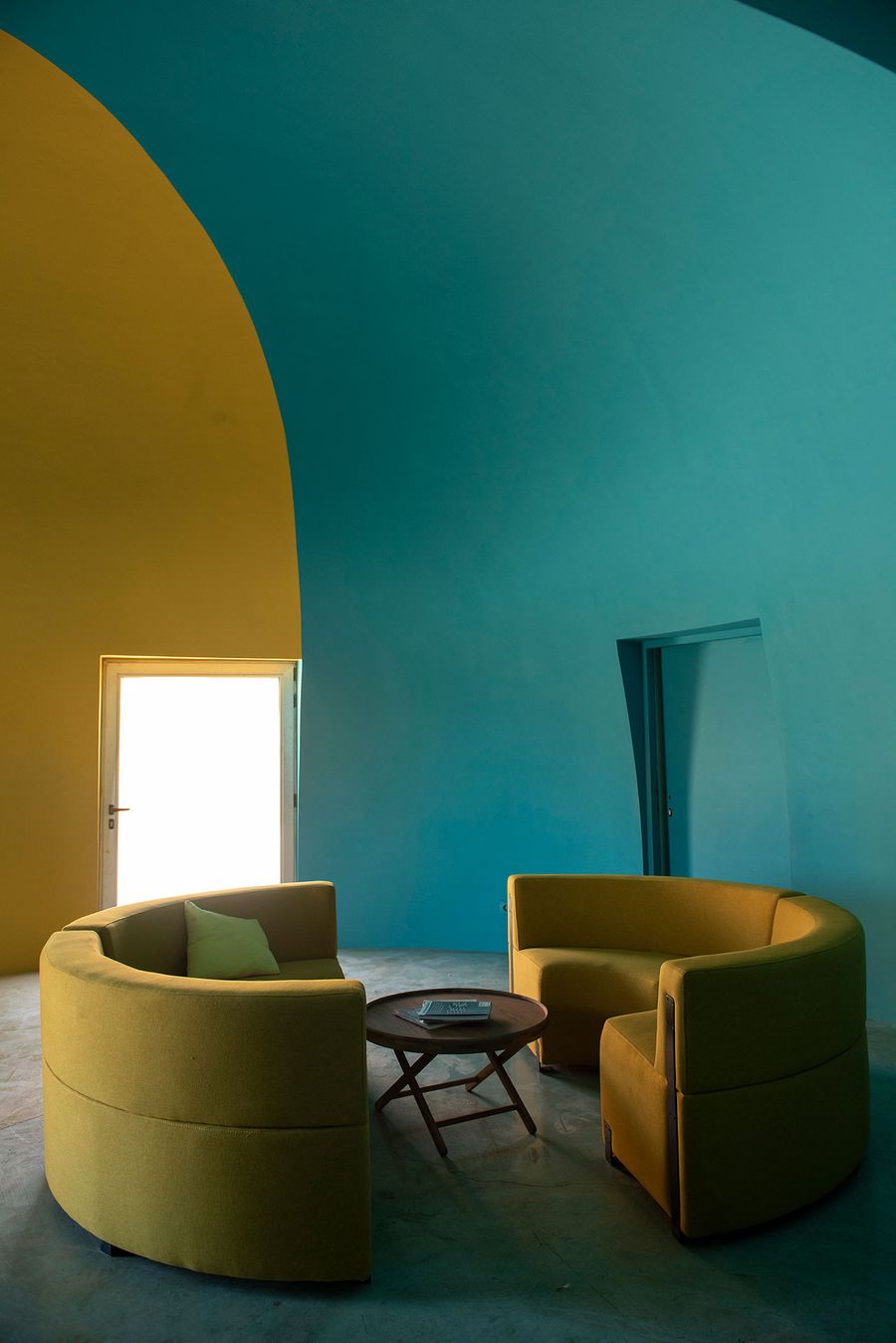
Photography by Tahmineh Monzavi.
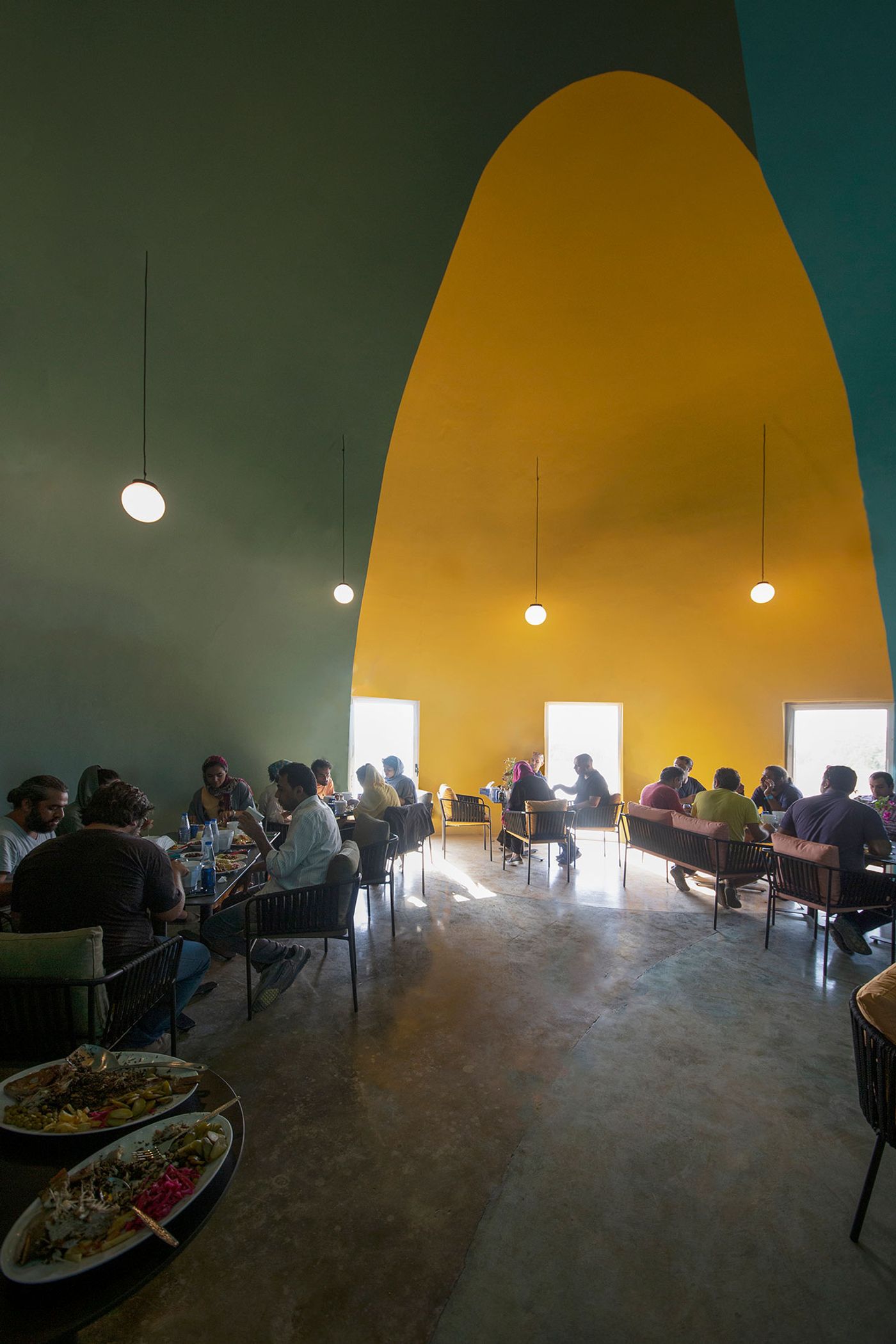
Photography by Tahmineh Monzavi.
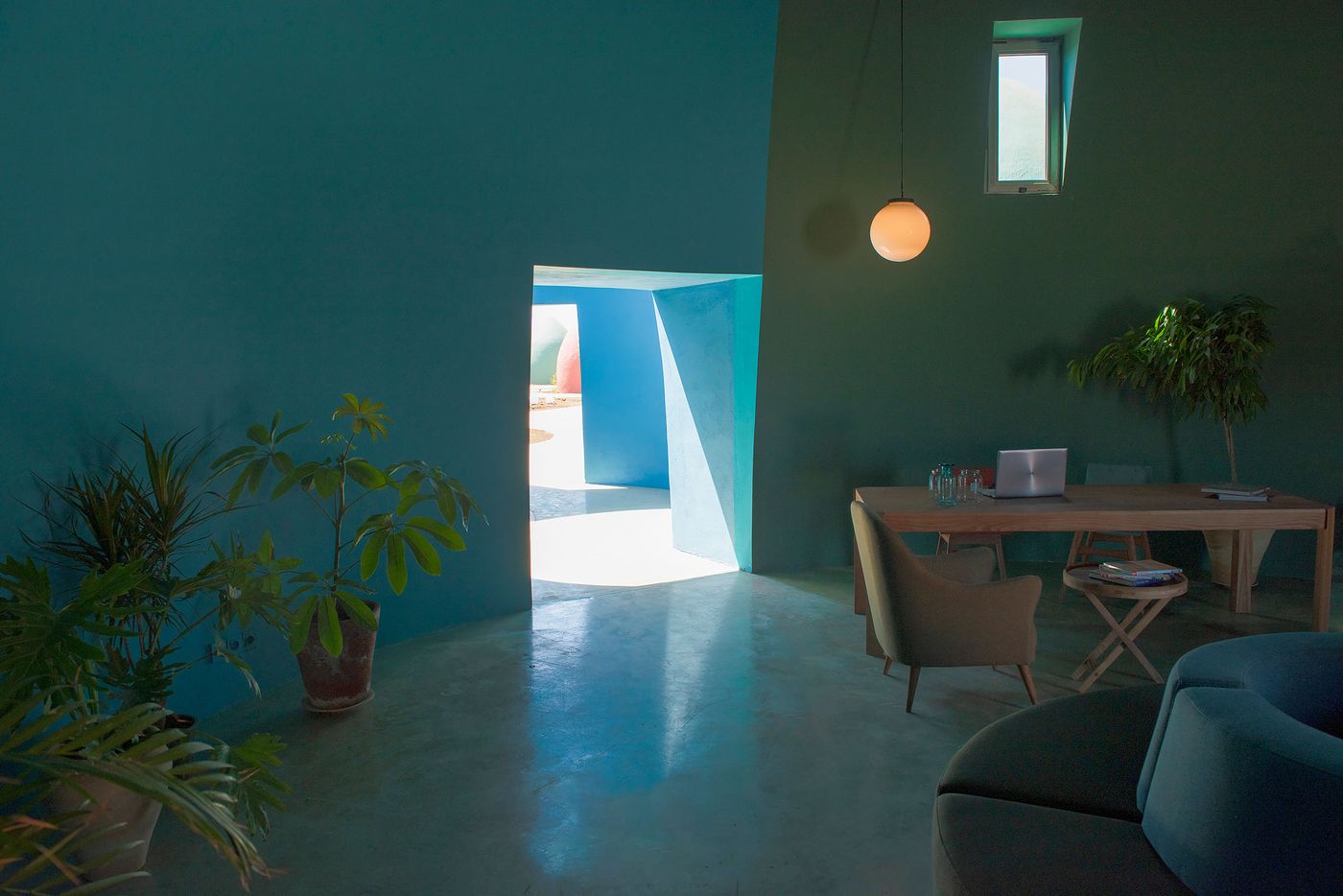
Photography by Tahmineh Monzavi.
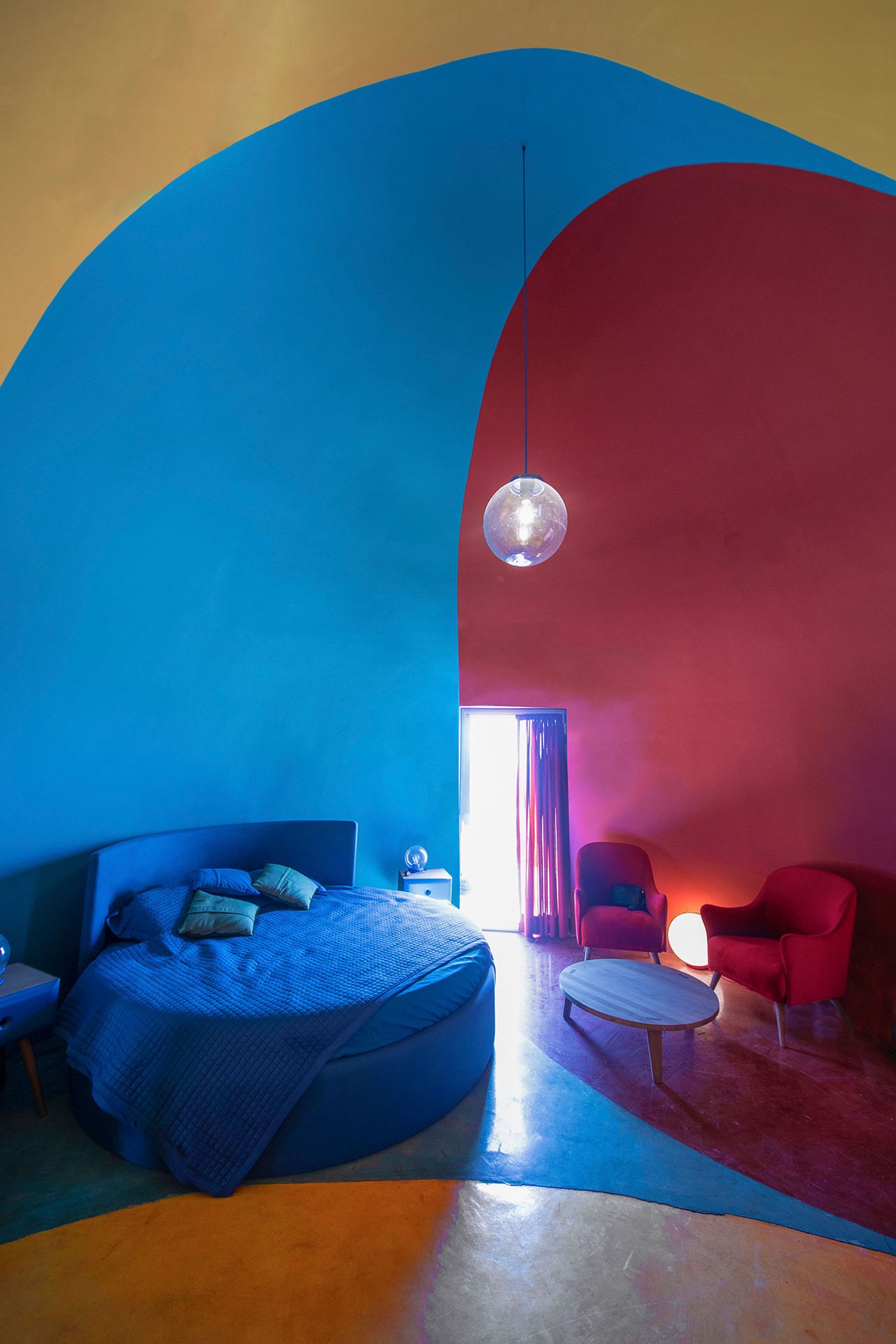
Photography by Tahmineh Monzavi.
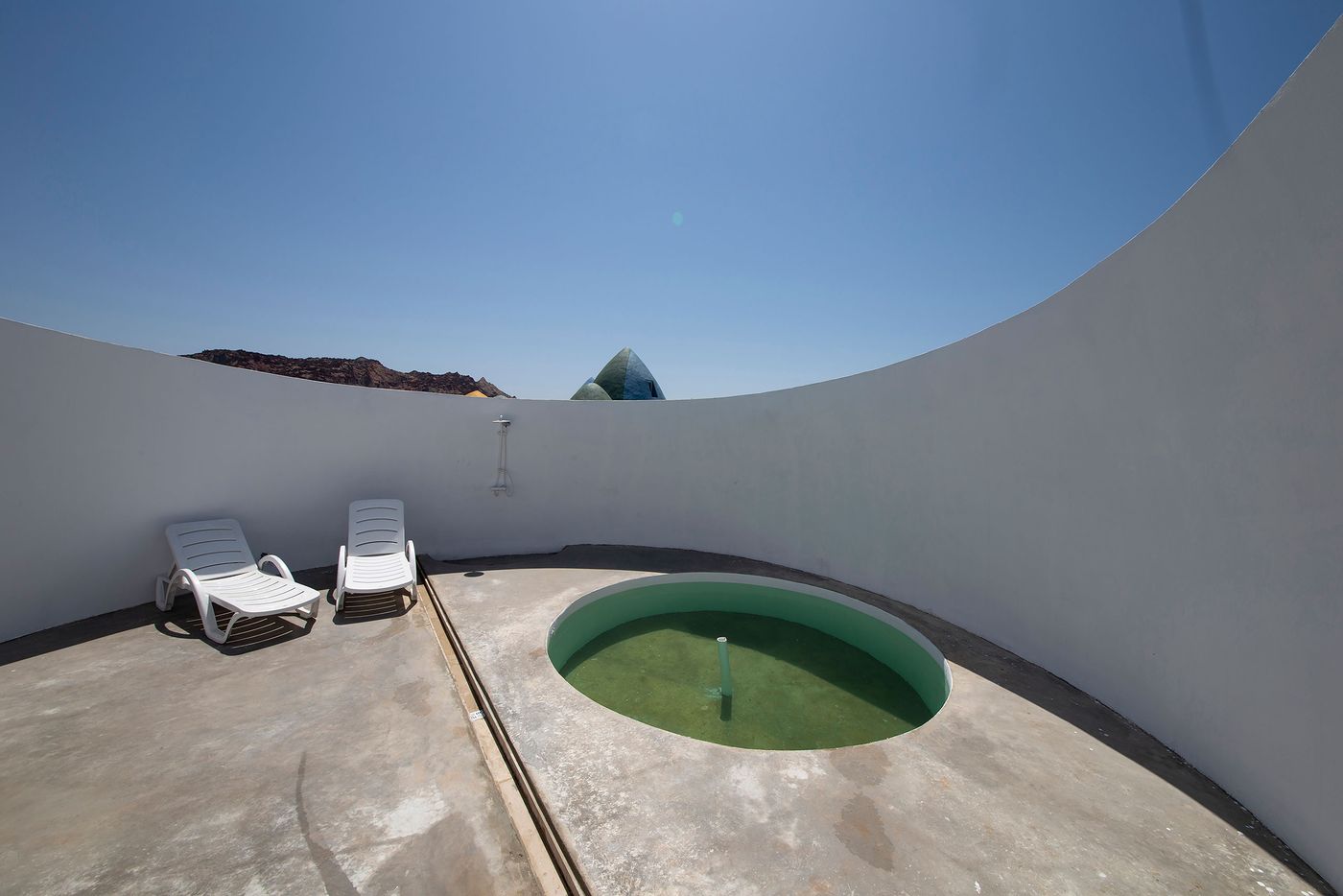
Photography by Tahmineh Monzavi.
Although the development’s colour palette reflects the pigments found naturally on the island, the use of naturally coloured soils has been avoided as their extraction has a heavy ecological impact. On the other hand, sand and gravel was in part locally sourced from the dredging of the dock of Hormuz.
The dispersed massing of the complex, along with planted areas, ensures a minimal impact on the ecosystem. For the same reason, no asphalt roads were constructed, relying instead on existing dirt tracks, nor any fences in order to retain free access to the beach. What’s more, water troughs around the property provide water for gazelles and other indigenous animals. The project’s environment credentials are also reflected in a rich program of events and activities that encourage visitors to take part in preserving the island’s natural environment. Surrounded by a landscape of such extraordinary beauty, we really don’t think that visitors will need too much convincing to do so.
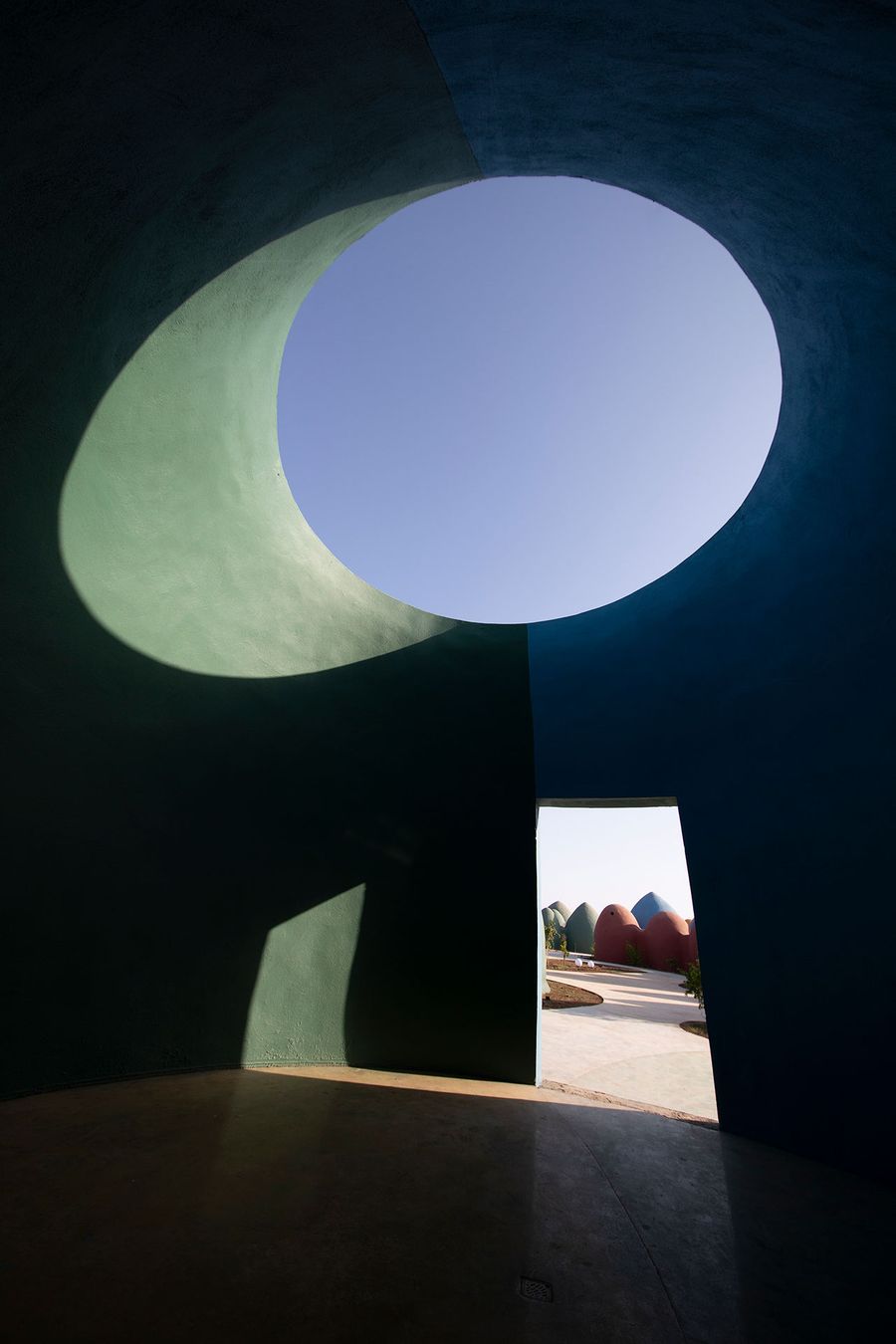
Photography by Tahmineh Monzavi.
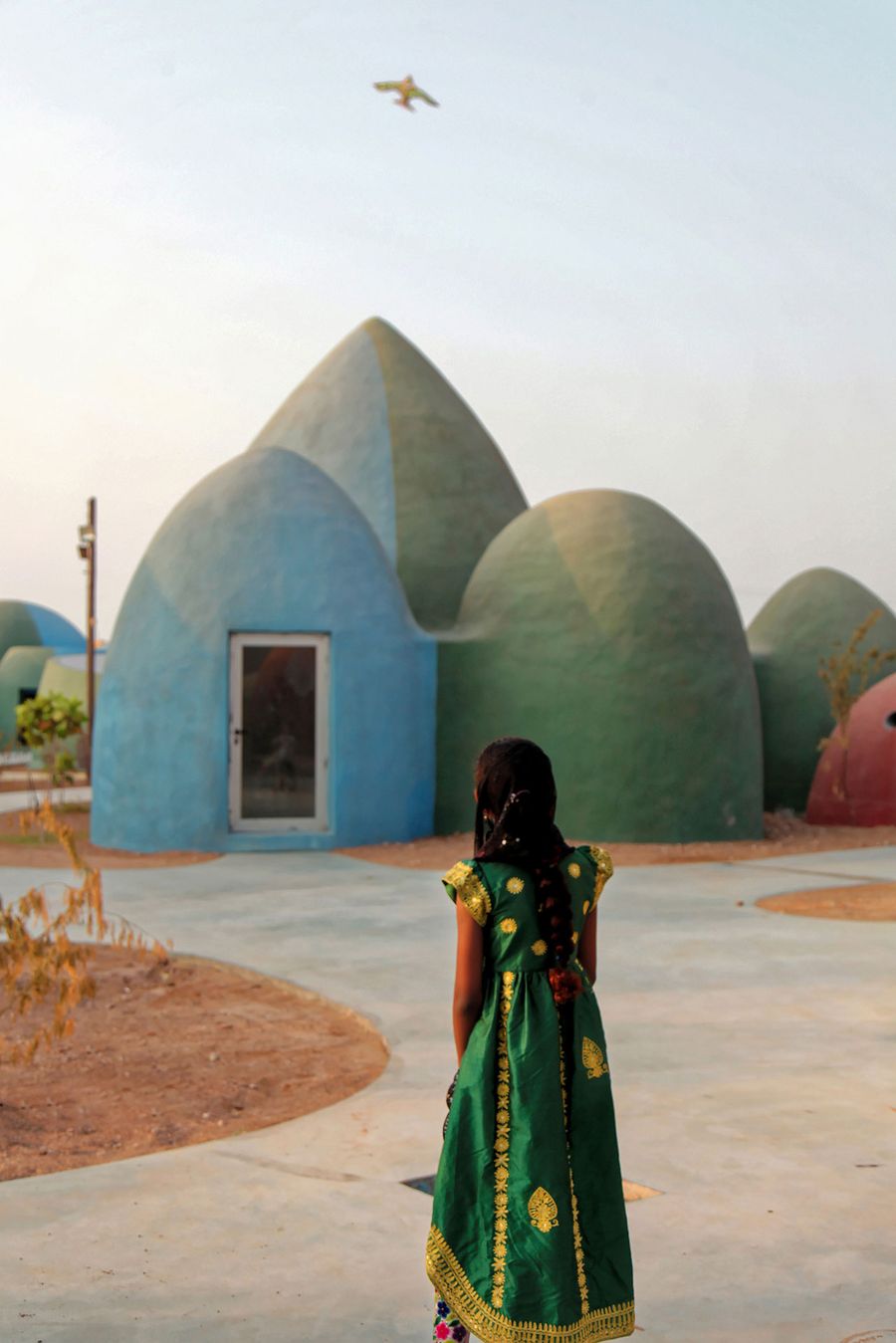
Photography by Tahmineh Monzavi.
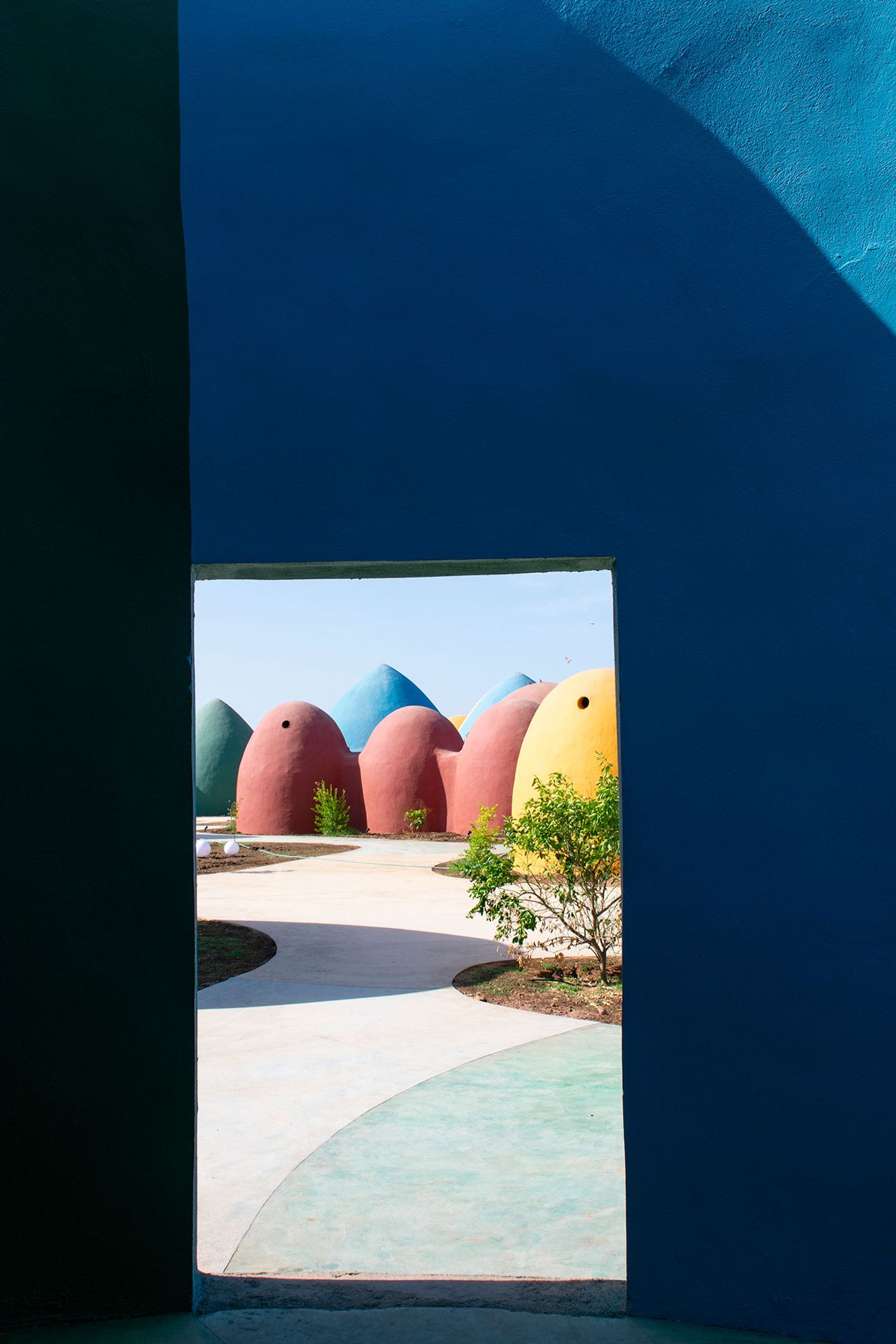
Photography by Tahmineh Monzavi.
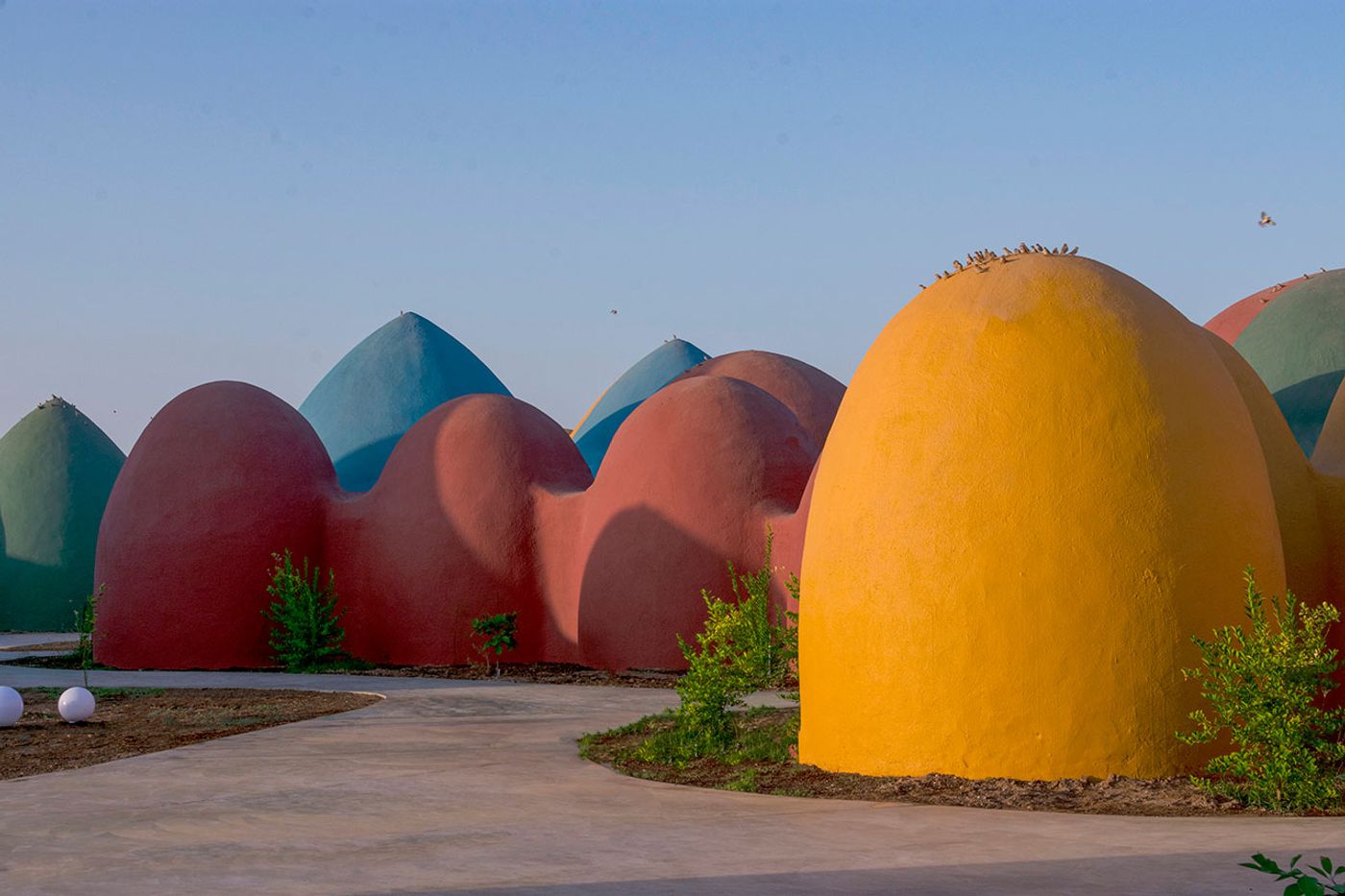
Photography by Tahmineh Monzavi.
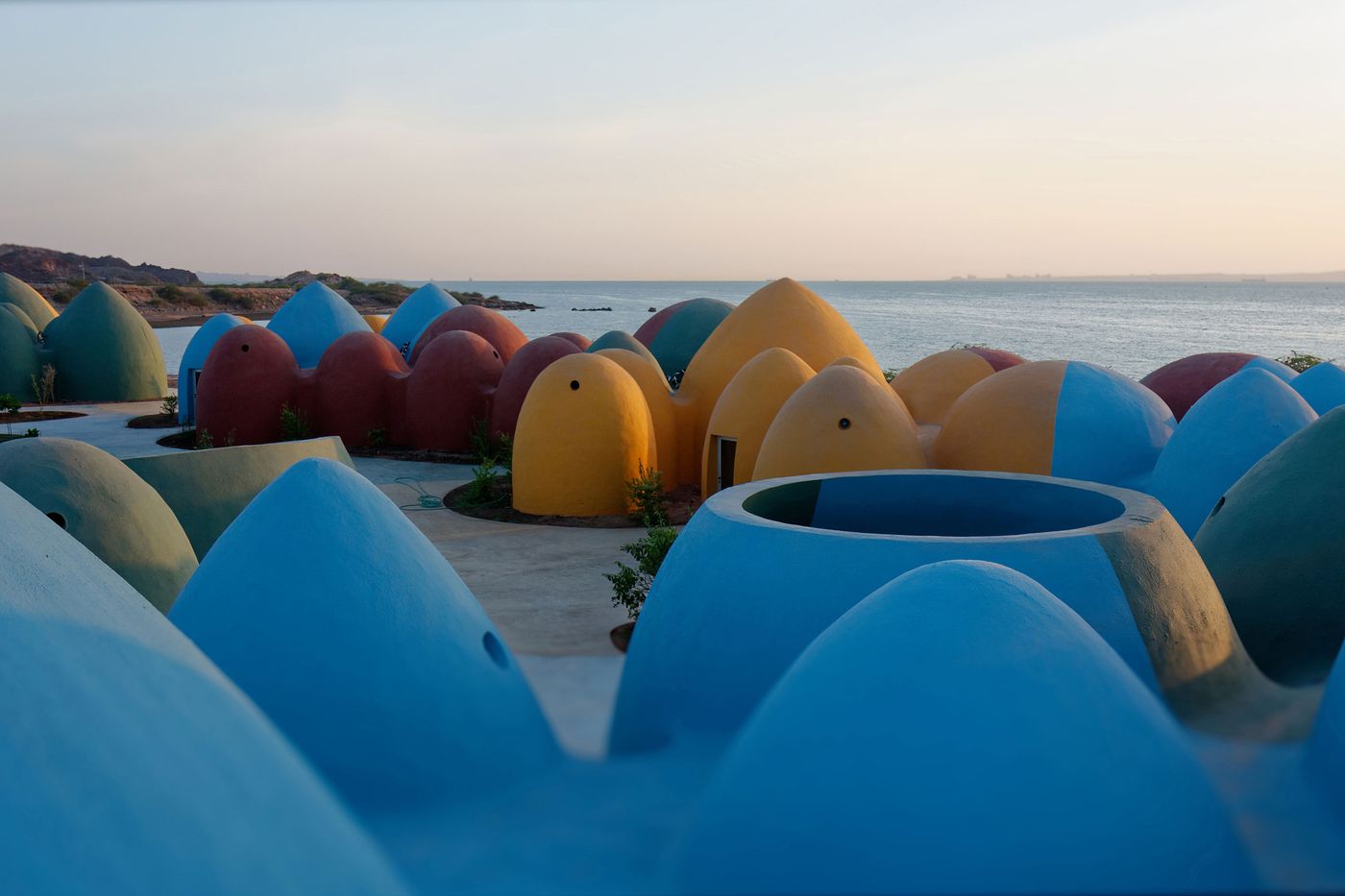
Photography by Payman Barkhordari.
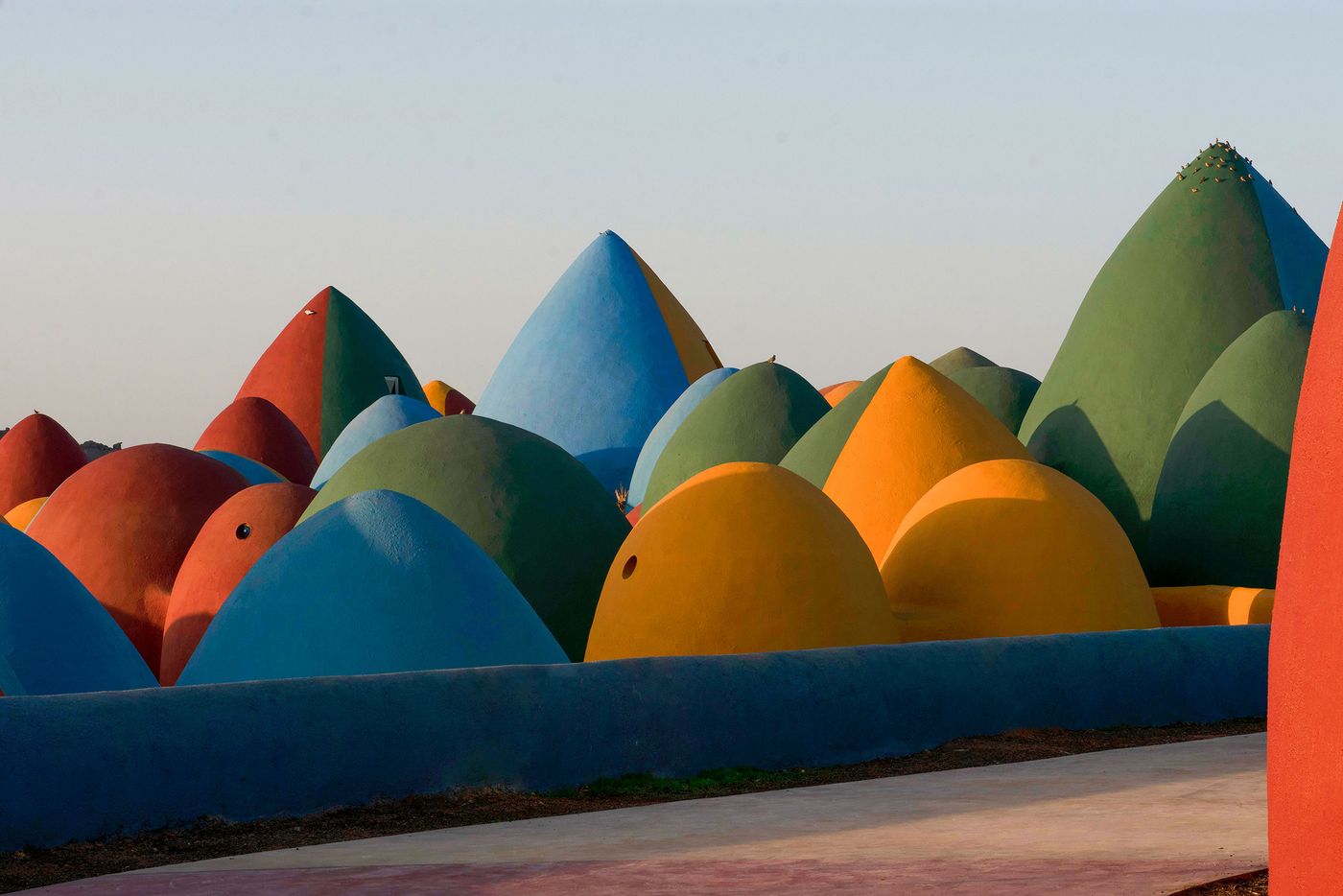
Photography by Tahmineh Monzavi.